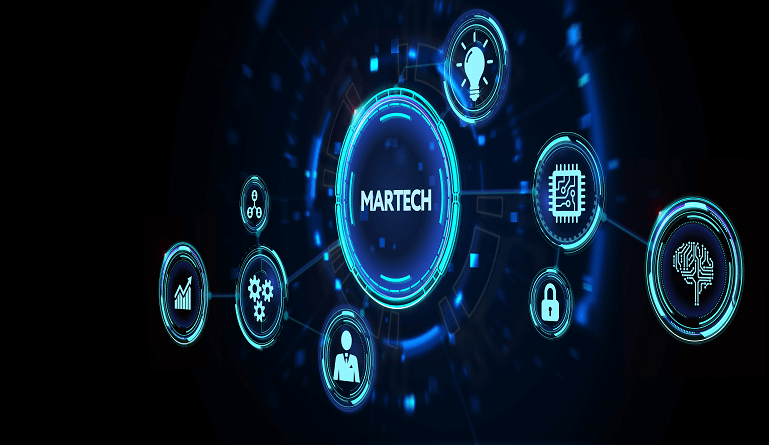2023 will be an important year for martech, with digital marketing spending increasing to $146 billion, but priorities shifting away from traditional PPC to visual and voice search.
Here are 10 exciting martech trends that will influence marketing technology into 2023, which you need for a winning martech strategy:
1. The rise of zero-party data gathering
The importance of big data for organizations is greater than ever before. Global privacy rules have necessitated a modification to our data collection methods.
In 2023, a prominent trend in digital marketing will likely feature organizations becoming more proactive in their data collection activities. Form design, for instance, may be used to acquire customer data that might impact the launch of your next product or service. Forms may be brief and concise to maintain user engagement. Additionally, it has a higher success rate in acquiring conversion-relevant data.
2. The need to become video-first
Because it can hold a viewer’s interest for longer than static postings, video-first content is becoming an increasingly important priority area in social media marketing. Marketers are employing bite-sized videos, such as TikToks and Instagram reels, to enhance engagement and brand exposure among millennials and Gen Z-ers. Instagram has actively tweaked its algorithm to favor reels and give video creators greater visibility over those with only static content.
Also promising to be an excellent marketing strategy is live streaming. When combined with influencers, live streaming enables prospective buyers to interact with advocates/experts who are acquainted with the product, discuss its pros — and maybe even some of its minor cons — and make a purchase while watching the video.
3. SSP and DSP (finally) coming together
The distinction separating buy- and sell-facing adtech enterprises has become more blurred. The Trade Desk, the biggest independent DSP (demand-side platform) in the market, suggested complete and direct integration with premium publishers in 2022. On the other hand, supply-side platforms (SSPs) are increasingly establishing agreements with media agencies, something DSPs have historically supported.
In 2023, programmatic platforms will be required to diversify their revenue models and build an ecosystem that links customers, vendors, producers, data platforms, and everything in between. SSPs must consider deploying buy-side capabilities via bespoke DSP development.
4. No-code as the go-to for digital marketing
No-code technology has become a crucial asset for businesses of all kinds, and these martech trends show no signs of letting up. According to Gartner’s study, by 2025, 70% of newly built enterprise apps will employ low-code or no-code technology. This surpasses app development.
As part of the no-code trend, solutions for constructing web questionnaires, pages, bots, and workflows may be created without writing a single line of code. Throughout 2023, no-code solutions will evolve from “basic” use cases, such as landing page creation, to more complex use cases, like building a partner directory or doing data analysis.
5. Holographic ads: the meeting of real with virtual
In the past, holograms were featured in science fiction and dystopian cinema. However, this vision is now becoming a reality, and holographic technology will be here to stay.
Holograms are the ideal marketing tool for firms seeking to showcase their brand and improve overall customer brand awareness. This advertising technology enables users to display 3D moving and interactive pictures and objects.
In a climate where conventional and digital advertisements are pervasive, hologram advertisements stimulate customers’ interest. Consequently, this may assist businesses in becoming viral and boosting brand recognition.
6. Multilingual marketing by design
The majority of online data is published in English, limiting its reach. Most non-native English speakers use internet translation tools, which may translate and brand your material incorrectly. Due to this, the production of multilingual material is increasing, particularly with the quick development and widespread availability of machine translation (MT).
Nevertheless, over-dependence on MT may achieve the same — often erroneous outcomes — as online translation systems. Consequently, machine translation post-editing, also known as MTPE, has gained widespread popularity among digital marketers since it combines modern technology and the expertise of local translators to generate multilingual material that successfully expresses the marketing message.
7. App push notifications as a high-ROI conversion driver
The rise of push notifications as an online martech trends is driven by two factors. First, the email campaign environment is growing increasingly crowded, making it harder to interact with your audience via that channel. Individuals are more frequently using mobile devices for all online activities, including brand searches and online buying.
Therefore, it is logical that companies are resorting to pushing notifications as an effective means of attracting customer attention. When performed properly – i.e., with creative and memorable messaging sent at a low daily frequency – In 2023, push notifications will boost open rates, transactions, and audience engagement overall.
8. The return of no-visual audio
In 2023, marketing executives will have access to more types of interactive content than only video. Creating inbound traffic using audio content, such as podcasts, presentations, and sometimes even audiobooks, is a potential option.
Traditional advertising largely used sound. Radio advertisements were prevalent and were used to create brand recognition in villages, cities, and even wider regions. Similarly, podcasts might be an effective inbound marketing strategy for companies that want to educate people. Appealing to a somewhat older demographic and attempting to boost engagement rates may be aided by this.
If the company marketing funnel contains a learning phase where the objective is to engage consumers and assist them in understanding more, podcasts might be an excellent marketing tool to use to reach them.
9. Age of the “genuinfluencer”
Influencers have surpassed stars in their capacity to impact consumer preference. During the pandemic, however, customers decided to move away from the near-perfect social influencer, forcing people who earn a career on social media to make modifications. Now, these influencers are corporate watchdogs and “genuinfluencers” whose purpose is to propagate ideas as opposed to products.
One trend that businesses are embracing seems to be an alignment with a “cause.” In 2023, business executives must stop seeing social commitment as a competitive advantage and, instead, embrace it as a genuine passion. by working with the right set of influencers who stand for values and do not just sell products.
10. The arrival of generation Alpha
Currently, Generation Z is the primary audience for organizations attempting to remain relevant and acquire new customers. However, there is a younger generation that is projected to significantly alter the marketing landscape: Gen Alpha, which consists of anybody born after 2010.
As they age, Gen Alpha children will almost certainly emulate their millennial parents in terms of the items they consume. Due to platforms such as TikTok, YouTube, Minecraft, and Roblox, Gen Alpha youth are used to material that provides options for participation as well as consumption. Not only is Generation Alpha connected to their classmates via social networking sites, but they’re also socially conscious and mindful of global issues such as climate change.
Social networking and virtual communities play an essential role in the lives of Gen Alpha; thus, marketers will need to implement social media-based interactive campaigns that engage with Gen Alpha wherever they are in the future.
Despite the rapid evolution of martech trends, Gartner found that just 42% of the martech stack is utilized on average. In 2023, make sure to keep these martech trends in mind as you craft your strategy for online and digital customer engagement. You can also read our guide on visual and social content for online sales if you are unsure as to how to get started.





